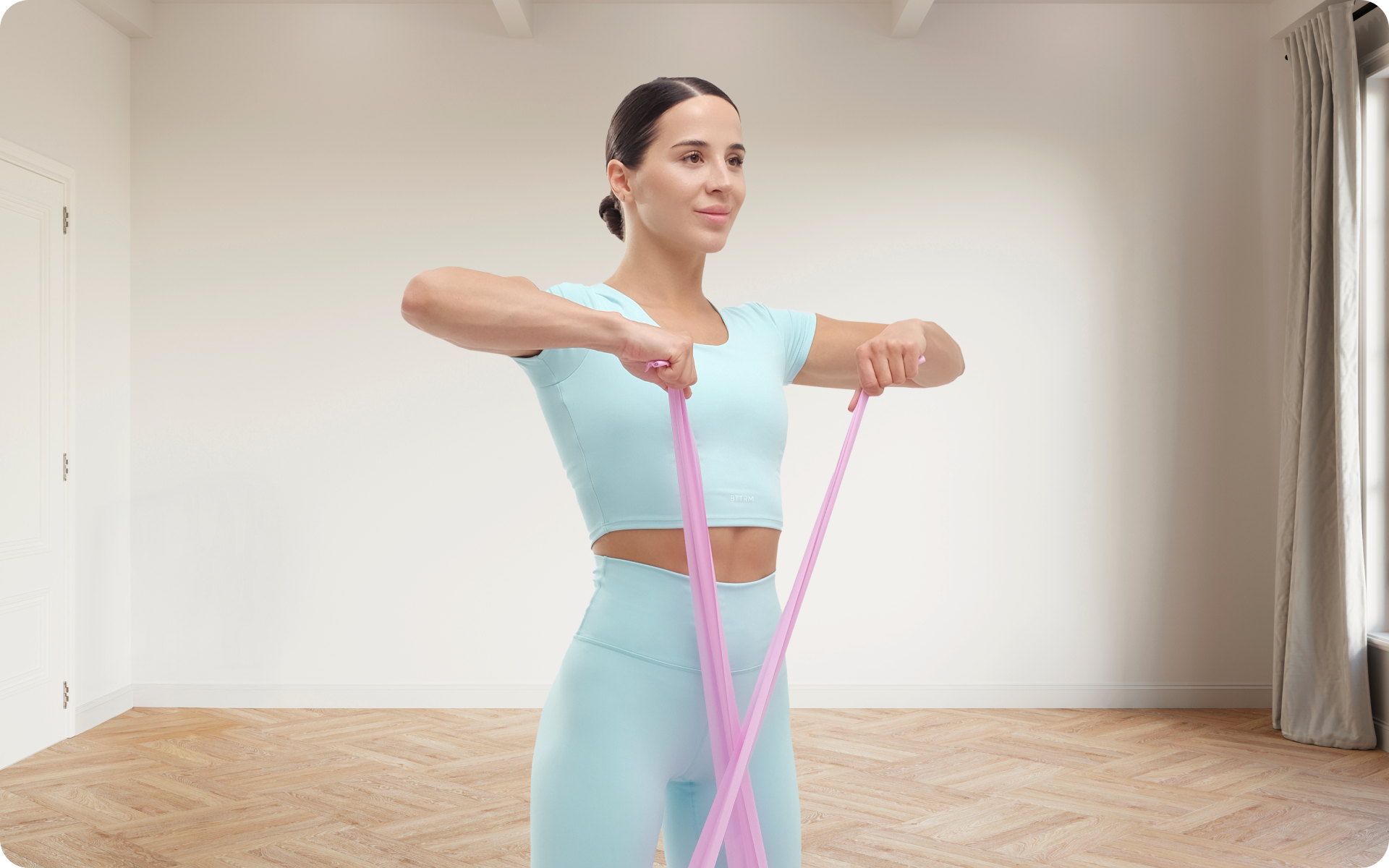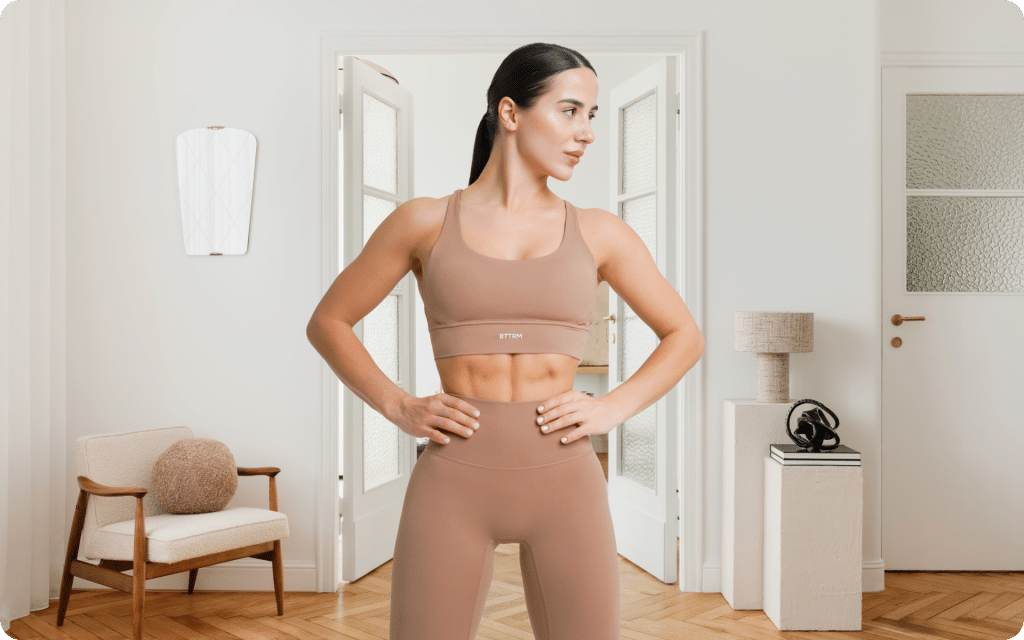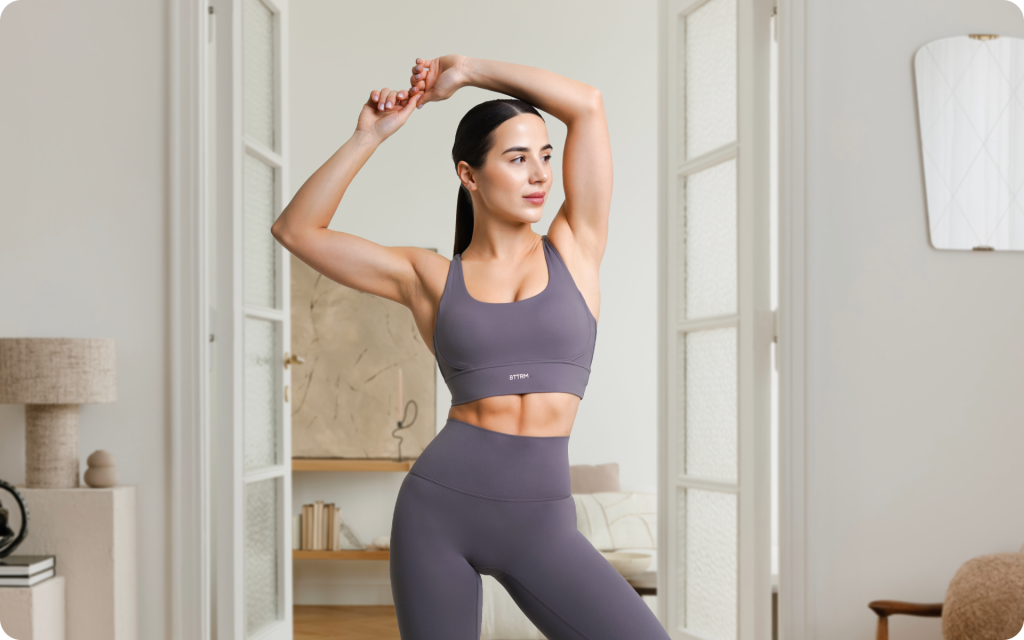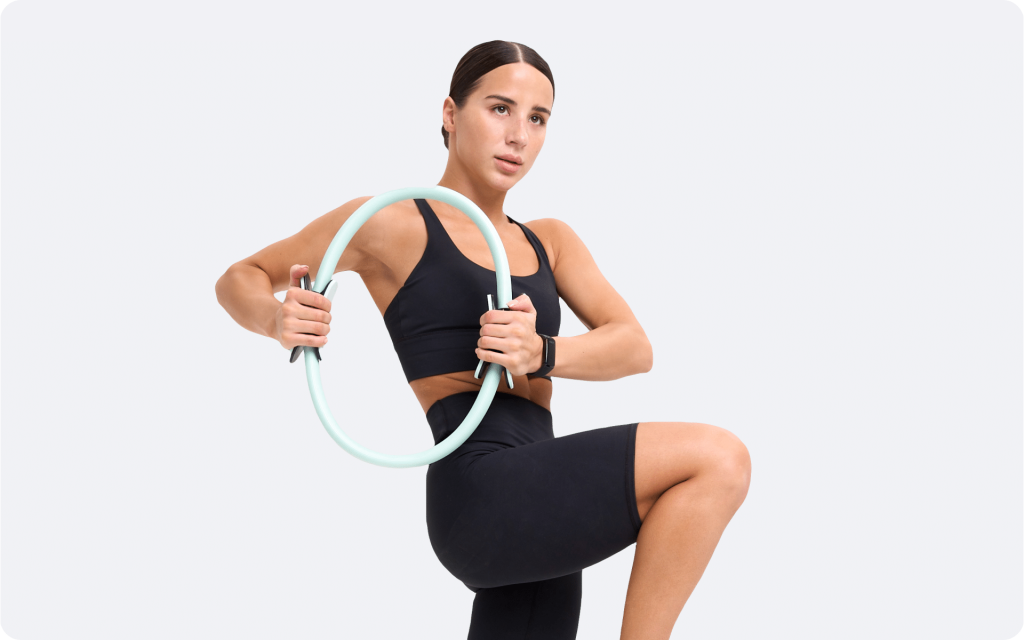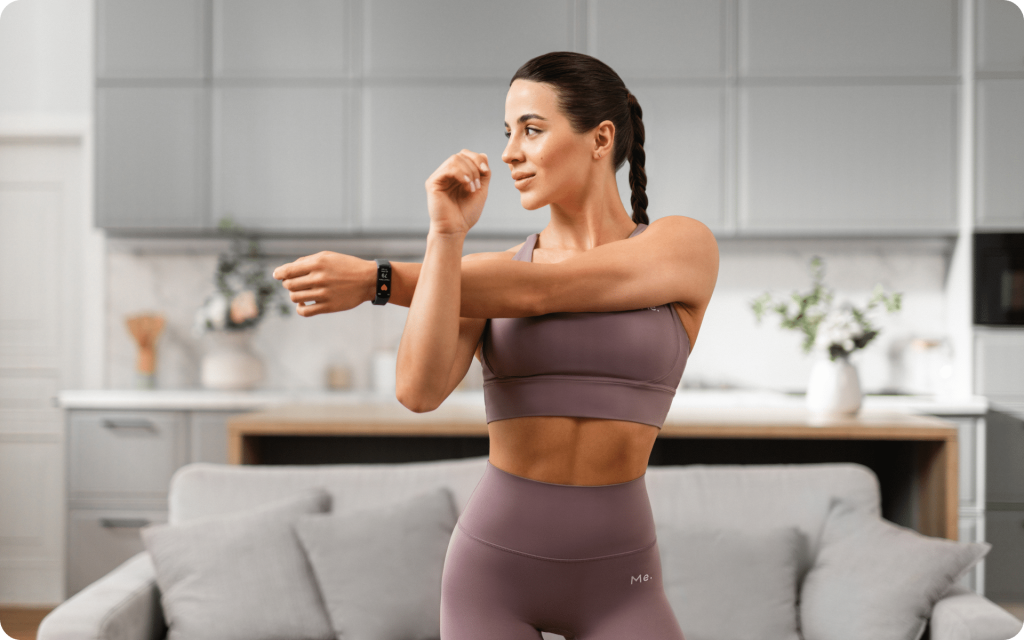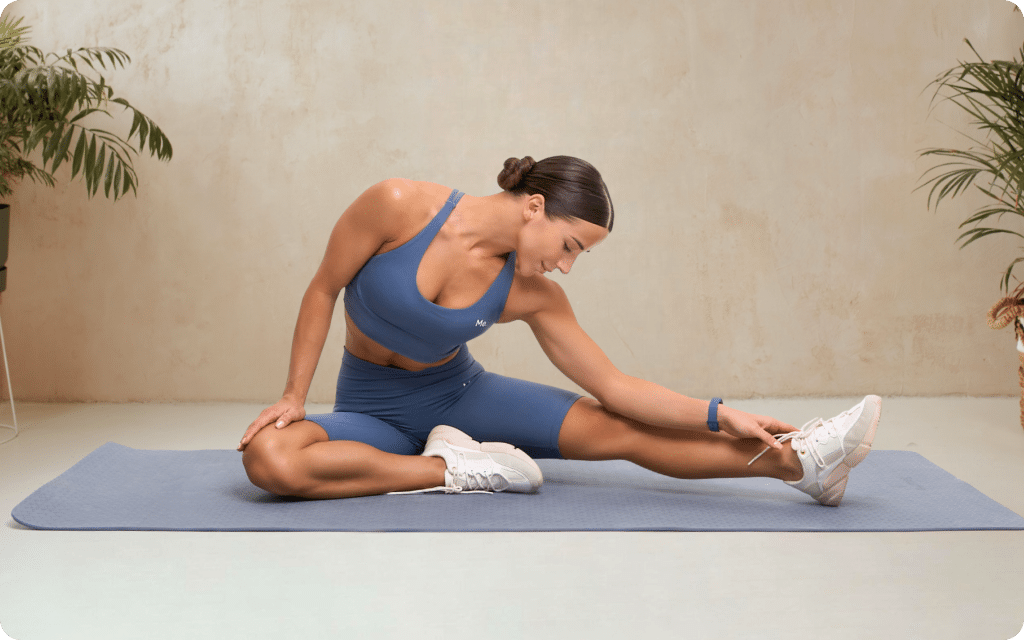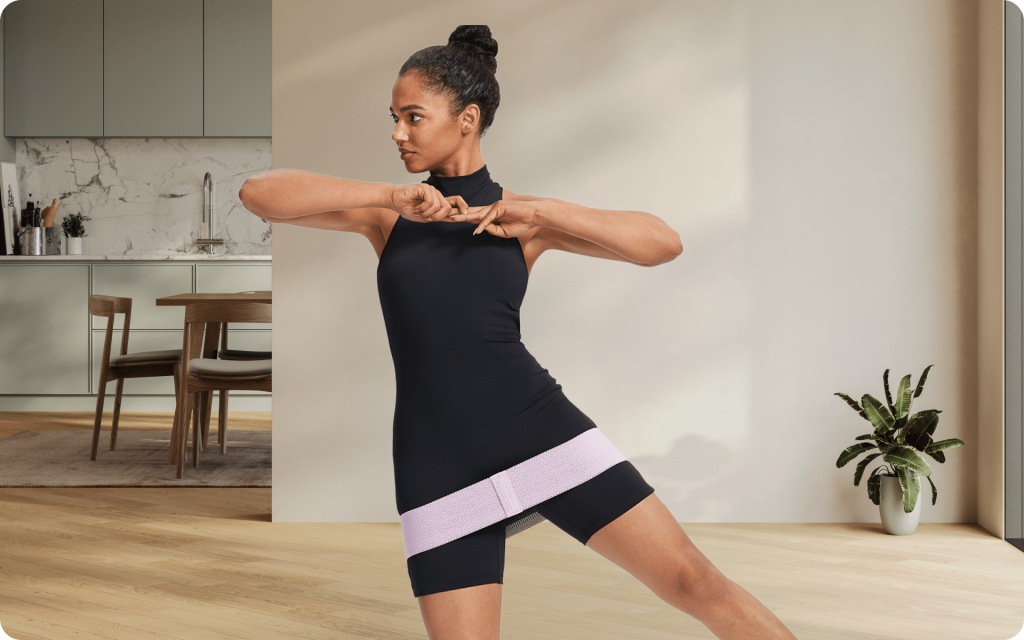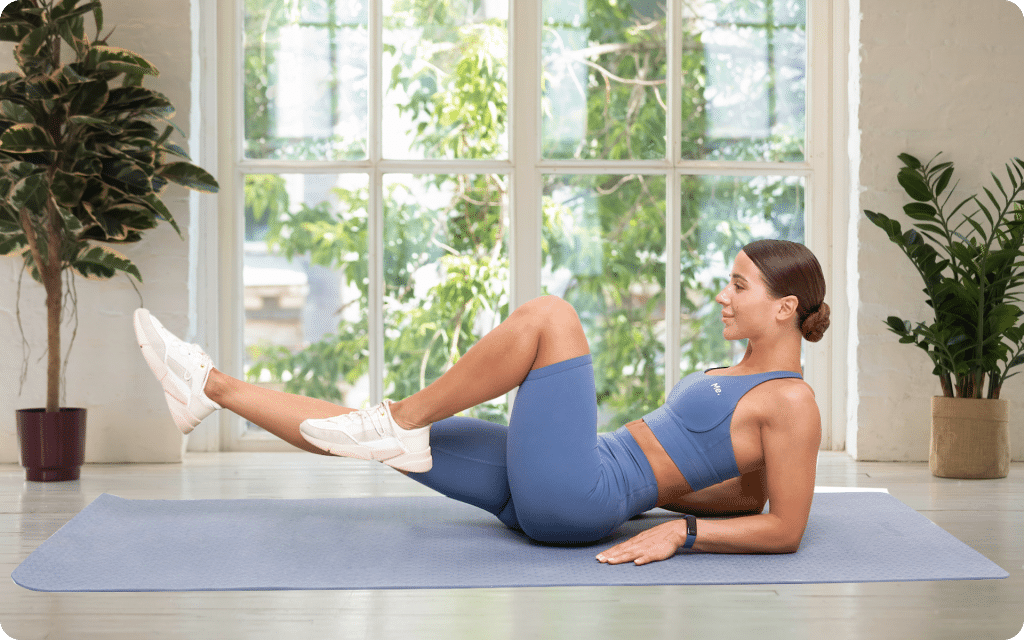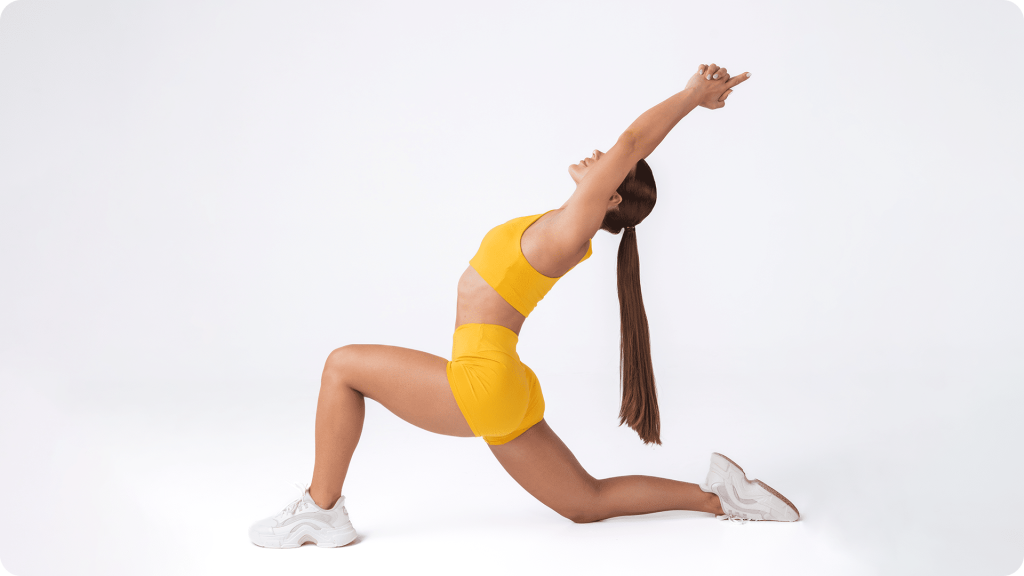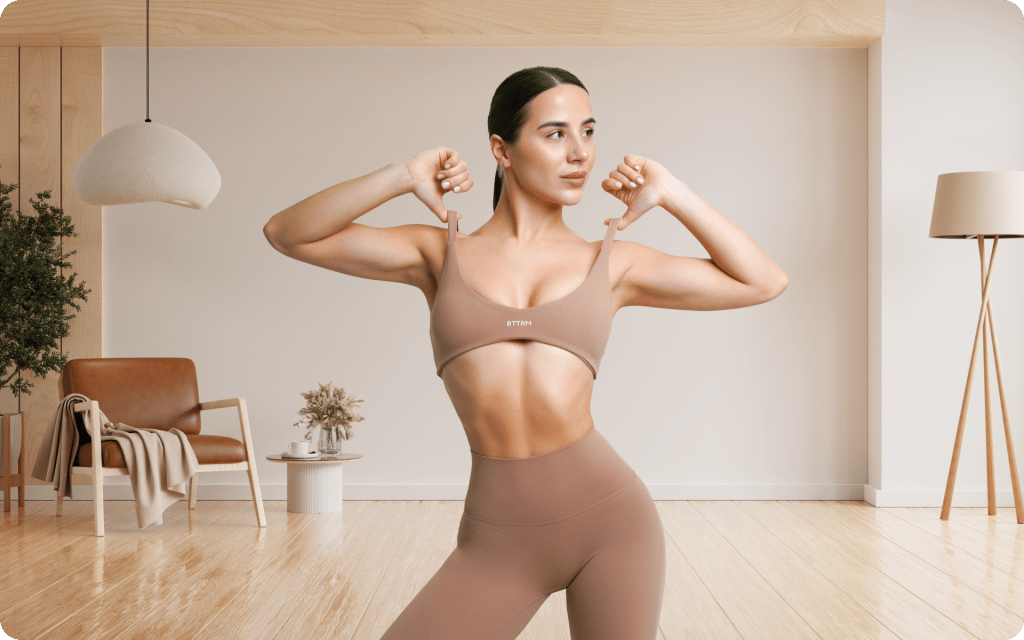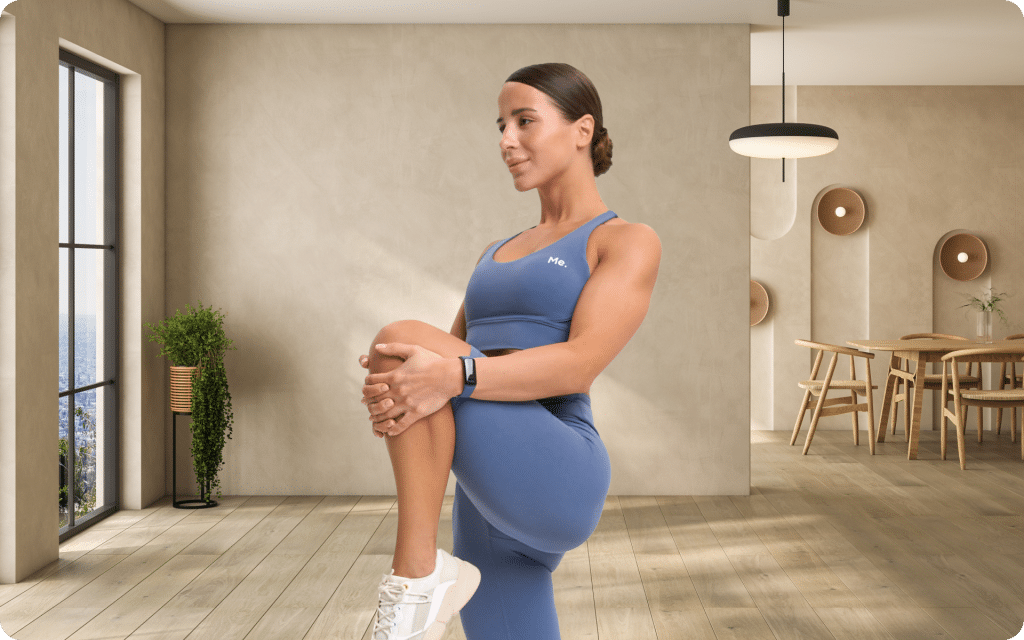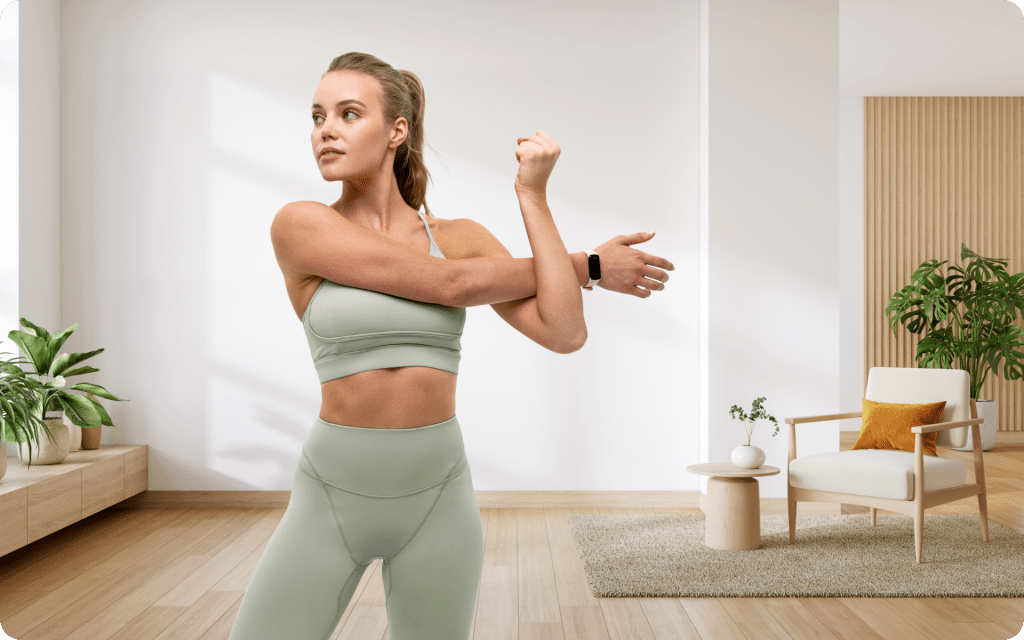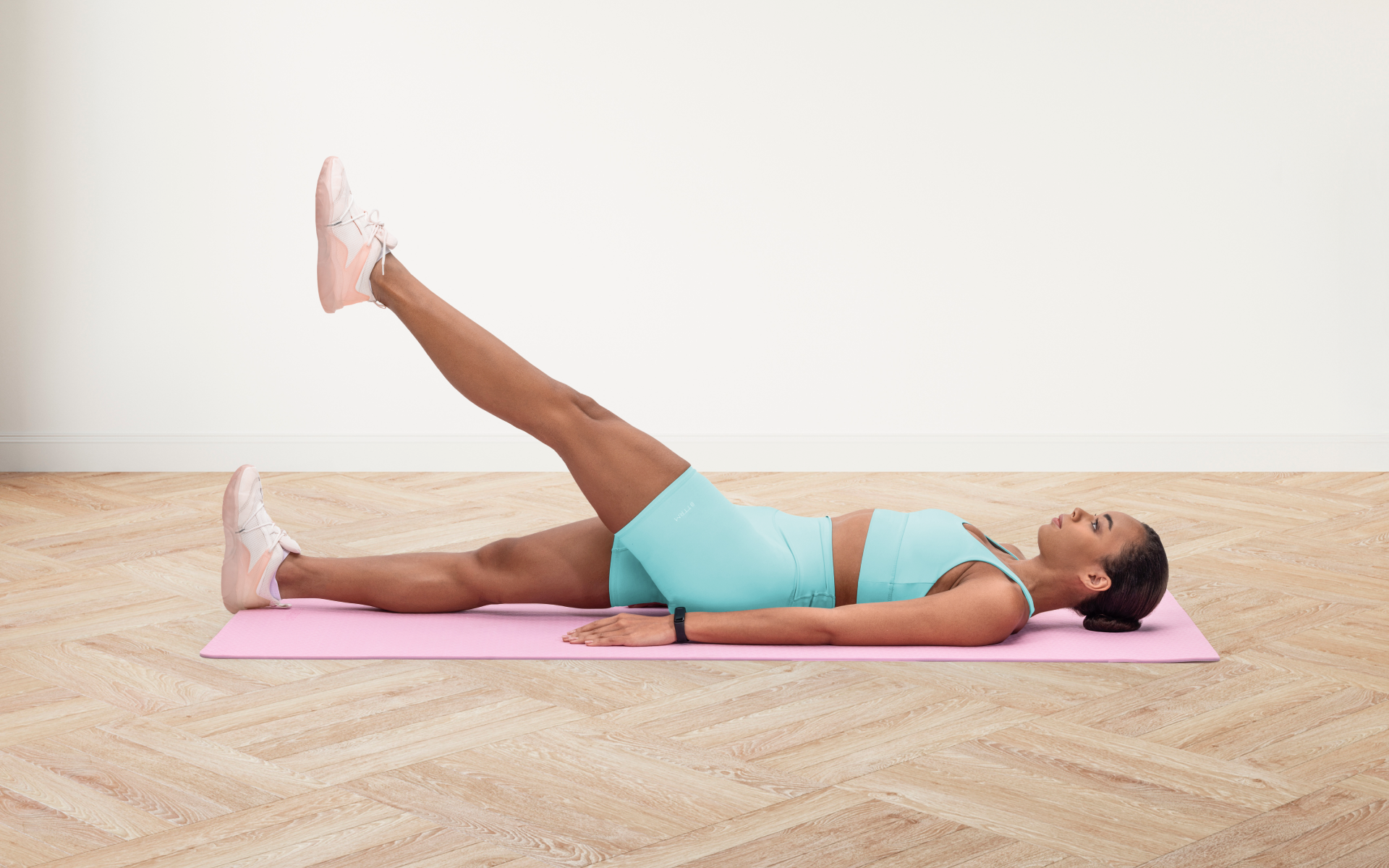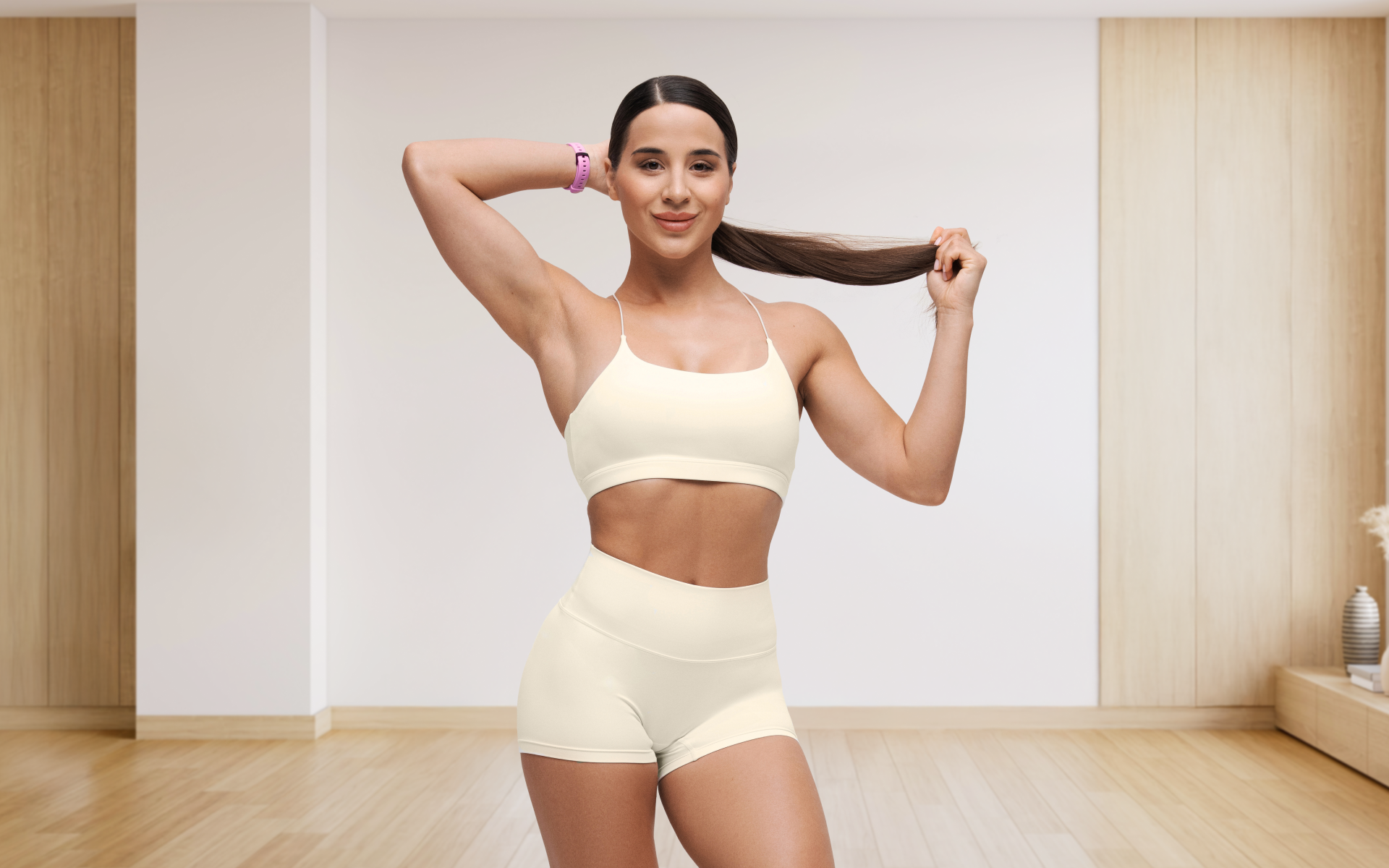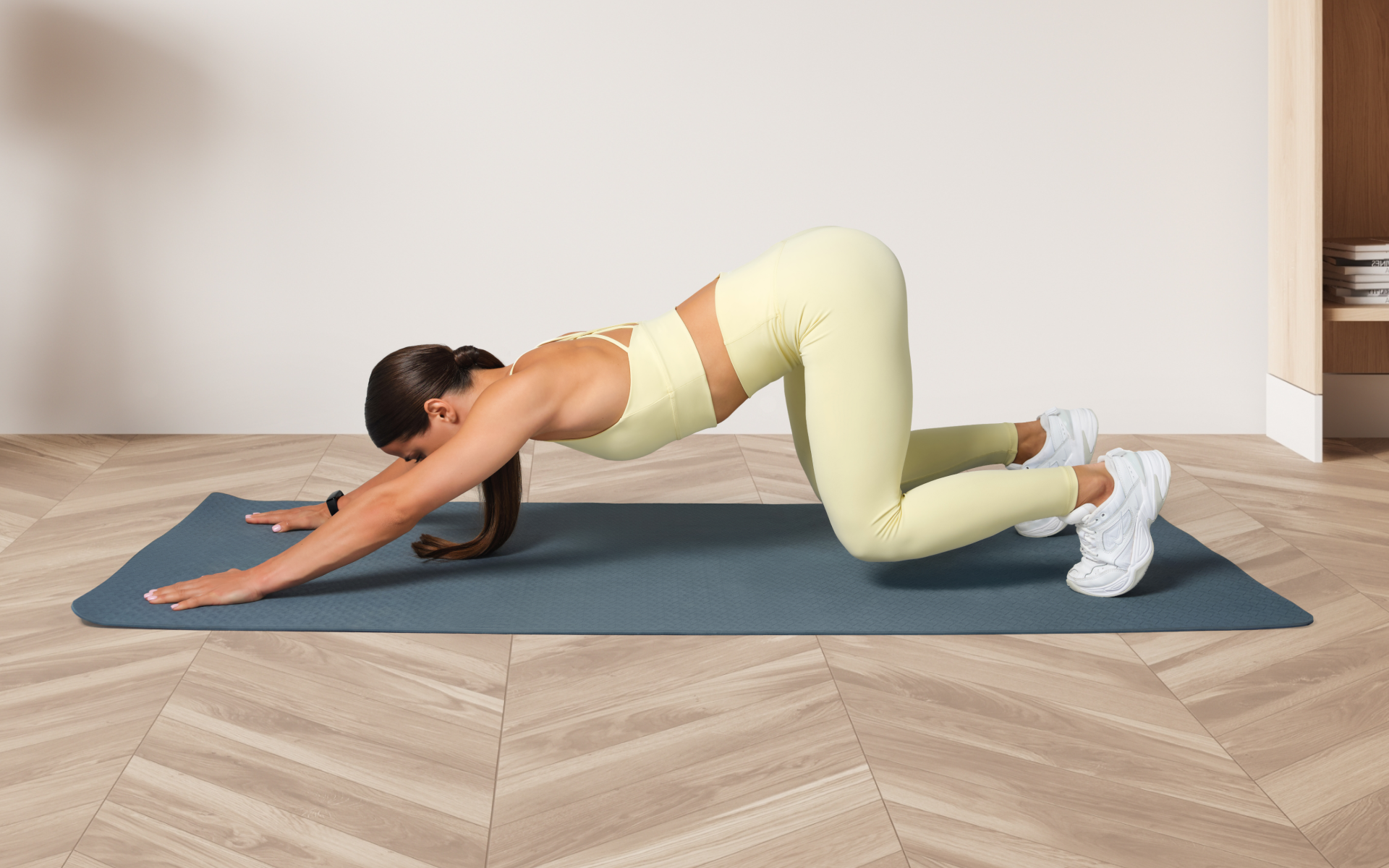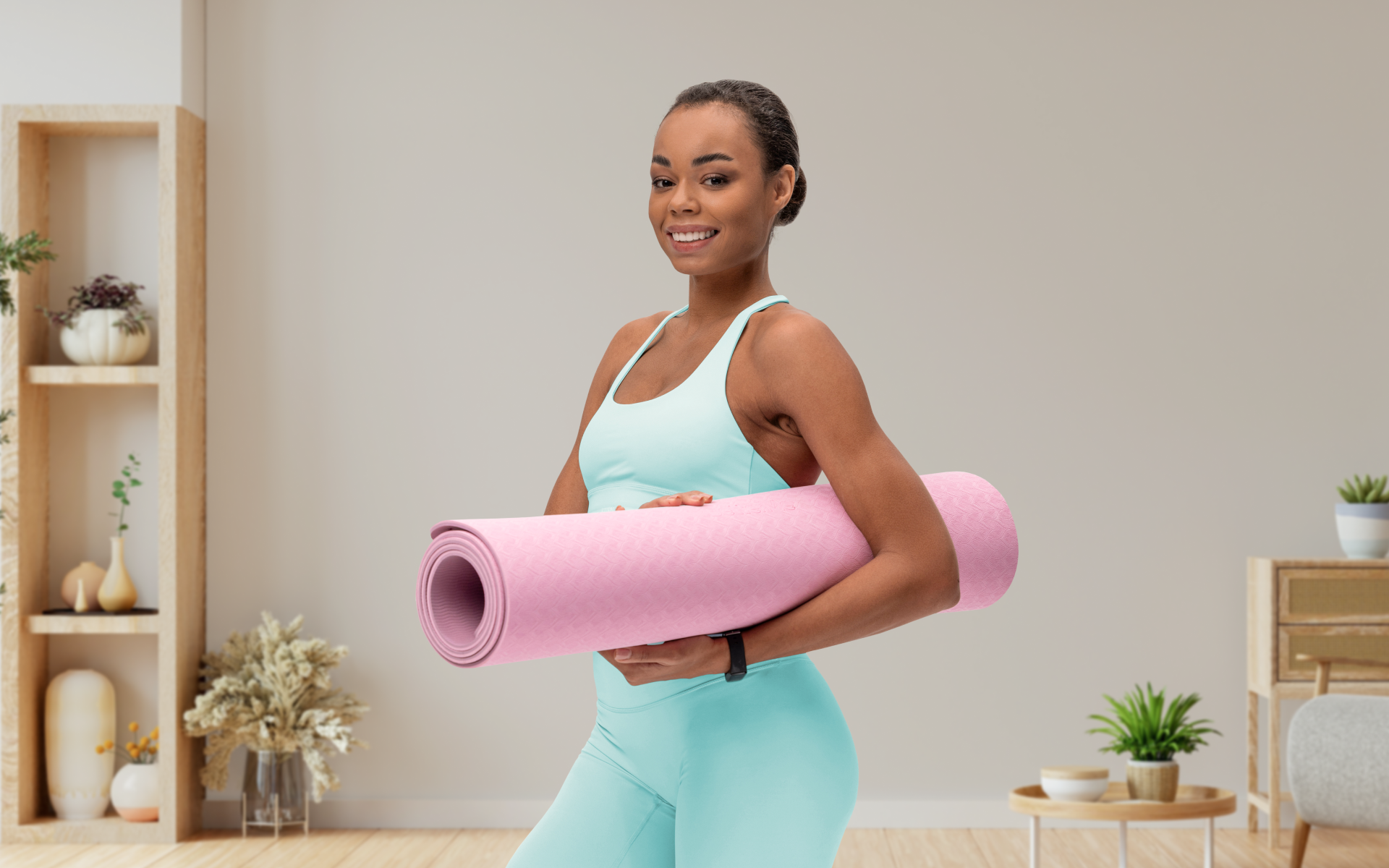You’ve rolled out your mat, tried a few classes, and now you’re wondering: how often do I actually need to do Pilates to see fundamental changes?
Whether you’re seeking better posture, stronger core muscles, or simply want to move with more grace and control, the frequency of your practice matters more than you might think.
Joseph Pilates had strong opinions about Pilates frequency. The founder of the method believed that consistency trumped intensity every time. But what does modern research tell us about his original recommendations?
And how should you adjust your practice based on your specific goals, whether that’s weight loss, injury recovery, or simply feeling more confident in your body?
This guide breaks down everything you need to know about Pilates frequency.
You’ll discover the science behind why specific practice schedules work better than others, learn how to tailor your routine to your fitness level, and understand realistic timelines for seeing results.
By the end, you’ll have a clear roadmap for building a sustainable Pilates practice that delivers the outcomes you’re after.
Is Pilates Actually Effective?
Pilates is effective. When practiced correctly and consistently, this form of exercise can result in:
- Uniform Body Development
Joseph Pilates emphasized that Contrology (his original term for Pilates) develops the body uniformly rather than overdeveloping certain muscle groups while neglecting others. This principle addresses a common problem in modern fitness: people focus heavily on visible muscles while ignoring those that stabilize.
Research supports this approach.
A 2010 study published in the Journal of Clinical Biomechanics found that Pilates training significantly improved muscle imbalances by strengthening weak postural muscles and lengthening tight ones. The method’s emphasis on core stability, spinal mobility, and balanced muscle development creates a foundation that supports all other physical activities (1).
- Physical Vitality and Mental Vigor
Pilates promised that regular practice would restore physical vitality and invigorate the mind. Modern neuroscience research shows this isn’t just feel-good marketing; there’s real science behind the mind-body connection in Pilates (2).
The method’s focus on breath coordination with movement activates the parasympathetic nervous system, reducing stress hormones and improving mental clarity.
A 2023 study published by the Open Public Health Journal demonstrated that participants who practiced Pilates for 8 weeks showed significant improvements in both physical fitness measures and psychological well-being scores (3).
- Enhanced Coordination and Grace
One of Pilates’ most distinctive promises was that practitioners would develop “suppleness, natural grace, and visible skill in the way you walk, in the way you play, and in the way you work.” This focus on movement quality sets Pilates apart from exercises that prioritize quantity or intensity alone.
The method’s emphasis on precise, controlled movements creates new neural pathways that improve overall movement patterns. Research in motor learning shows that practicing precise, mindful movements transfers to improved coordination in daily activities, exactly what Joseph Pilates observed in his students decades ago (4).
BetterMe: Health Coaching app helps you achieve your body goals with ease and efficiency by helping to choose proper meal plans and effective workouts. Start using our app and you will see good results in a short time.
- Muscular Endurance and Functional Strength
Pilates builds what Joseph Pilates called “muscular power with corresponding endurance,” the ability to maintain strength and control over extended periods.
Unlike traditional strength training that often focuses on maximum force production, Pilates develops the type of endurance that supports daily activities and athletic performance (5).
Studies consistently show that Pilates improves muscular endurance (5). The method’s use of resistance equipment like the Reformer, Pilates ring, and Wunda chair can amplify these benefits by providing variable resistance that challenges muscles throughout their full range of motion (6).
- Mind-Body Mastery
Perhaps Pilates’ most ambitious claim was that practitioners would gain “mastery of your mind over the complete control of your body.” This isn’t mystical thinking; it’s a practical description of improved body awareness and motor control.
The method’s requirement for mental focus during physical movement “reawakens thousands and thousands of otherwise ordinarily dormant muscle cells” while simultaneously activating corresponding brain cells.
Modern research on neuroplasticity confirms that this type of mindful movement practice creates lasting changes in both muscular function and neural processing (7).
Read more: Mat Pilates: A 10-Exercise Sequence for Your Home Workout
Can Pilates Improve My Posture?
Pilates can improve your posture. However, the relationship between Pilates and posture improvement is more nuanced than simply “fixing” bad posture.
Recent research has shifted away from the idea of universally “good” or “bad” posture toward promoting postural variation and awareness.
Early approaches to posture focused on achieving and maintaining an “ideal” alignment. However, current research shows that the human body functions best with regular postural changes rather than static positioning.
A 2012 systematic review in the Journal of Biomechanics found that postural variation (not perfect posture) correlates most strongly with reduced pain and improved function (8).
This shift in understanding doesn’t diminish Pilates’ value for posture improvement.
Instead, it highlights one of the method’s greatest strengths: developing postural awareness and movement options.
How Pilates Encourages Postural Variation
Pilates excels at giving you more postural choices rather than locking you into one “correct” position.
The method’s emphasis on spinal mobility in all directions:
- Flexion
- Extension
- Lateral flexion
- Rotation
Ensure that your spine maintains its ability to move freely through multiple planes of motion (9).
Each Pilates exercise challenges your postural system differently. The Hundred requires spinal flexion with arm coordination, while Swimming promotes extension with alternating limb movements.
Roll Up teaches articulated spinal flexion, and Spine Twist develops rotational control.
This variety ensures that your postural muscles develop balanced strength and flexibility.
Building Postural Awareness
One of Pilates’ most valuable contributions to posture improvement is developing proprioception, which is your awareness of where your body is in space (10).
Many postural problems stem not from weakness but from poor body awareness.
People often don’t realize when they’re slumping, rounding their shoulders, or tilting their pelvis.
Pilates training constantly directs your attention to spinal alignment, shoulder blade positioning, and pelvic placement. Over time, this focused attention creates lasting improvements in postural awareness that extend beyond your exercise sessions.
The method’s emphasis on breath coordination further enhances postural awareness.
Proper breathing patterns support spinal alignment and activate deep postural muscles that work automatically when functioning optimally (11).
How Often Should You Do Pilates To See Results?
Joseph Pilates provided clear guidance on practice frequency in his foundational text “Return to Life Through Contrology.”
His prescription was specific: perform the exercises regularly 4 times per week for 3 months to achieve “body development approaching the ideal, accompanied by renewed mental vigor and spiritual enhancement” (12).
Understanding Joseph Pilates’ Original Prescription
This 4-times-per-week recommendation wasn’t arbitrary. Pilates understood that the neuromuscular adaptations his method promoted required consistent reinforcement without overtraining. He also specified that sessions should last at least 10 minutes, emphasizing quality and consistency over duration (12).
Modern exercise science supports this frequency for several reasons.
Neuromuscular adaptations (the improved communication between your brain and muscles that Pilates develops) occur most effectively with regular, moderate-frequency practice (13). Four sessions per week provide enough stimulus to drive adaptation while allowing sufficient recovery time.
Contextualizing the Prescription for Modern Practitioners
While Joseph Pilates’ original recommendation provides an excellent foundation, modern practitioners need to consider how Pilates fits into their overall activity profile.
Someone who sits at a desk 8 hours a day has different needs than an athlete using Pilates for cross-training.
For general fitness and posture improvement, 3-4 Pilates sessions per week remains the gold standard. This frequency allows you to build on previous sessions while giving your body time to integrate new movement patterns.
If you’re combining Pilates with other activities, consider how they complement each other. Pilates works exceptionally well as a foundation for different sports and activities because it improves movement quality and reduces injury risk.
Athletes often find that taking Pilates at least twice a week can enhance their primary sport performance (14).
For those dealing with chronic pain or postural issues, initially practicing 5-6 days per week with a doctor’s approval and expert guidance may be beneficial, with sessions gradually reduced to 3-4 times weekly as improvements stabilize.
So, should you do pilates every day?
Consider These Factors to Determine Your Optimal Frequency
Several personal factors should influence your Pilates practice frequency:
Current fitness level: Beginners need more frequent practice to develop fundamental movement patterns and strength, while advanced practitioners might maintain their skills with fewer but longer sessions.
Available time: Consistency matters more than perfection. Three 20-minute sessions weekly will produce better results than one 60-minute session followed by weeks of inactivity.
Specific goals: Weight loss goals require more frequent sessions combined with cardiovascular activities, while stress reduction is possible with fewer, more mindful sessions.
Recovery capacity: Age, stress levels, sleep quality, and other life factors affect how quickly you recover between sessions. Listen to your body and adjust accordingly.
Read more: Beginner Mat Pilates Leg Workout For Strong, Toned Legs
How Often Should I Do Pilates As A Beginner?
For beginners, starting with 3-4 sessions per week allows you to reinforce new movement patterns while avoiding overwhelming your nervous system.
Each session should focus on mastering basic movements before progressing to more complex exercises.
Joseph Pilates acknowledged that beginners wouldn’t immediately execute exercises perfectly, noting that “at first you probably will not be able to carry out instructions as illustrated.” This difficulty isn’t a limitation, but it’s precisely why the exercises will benefit you.
Reasons why BetterMe is a safe bet: a wide range of calorie-blasting workouts, finger-licking recipes, 24/7 support, challenges that’ll keep you on your best game, and that just scratches the surface! Start using our app and watch the magic happen.
The first month of Pilates practice should emphasize fundamental principles:
- Breathing coordination, core engagement, spinal articulation, and basic coordination patterns.
- Sessions of 30-45 minutes allow sufficient time to practice these concepts without fatigue compromising your form.
Consider alternating between different types of sessions as a beginner.
Mat Pilates classes help you learn the fundamental movement patterns, while equipment sessions can provide additional support and resistance.
Begin with foundational exercises and master each movement before progressing.
Joseph Pilates emphasized that each exercise should be mastered before moving to the next, ensuring that you build strength and coordination systematically.
As your body adapts to the movement patterns and your strength improves, you can gradually increase session frequency or duration. Most beginners see significant improvements in body awareness and basic strength within 4-6 weeks of consistent practice.
If you’re interested in doing pilates every day, try a Daily Wall Pilates routine that requires minimal space and equipment.
How Often Should You Do Pilates To Lose Weight?
For weight loss support, consider practicing Pilates 2-4 times per week, combining it with aerobic activities that burn more calories. This frequency allows you to use Pilates sessions to maintain and build muscle mass, while aerobic activities create the caloric deficit necessary for weight loss.
A typical Pilates session burns approximately 100-115 calories per hour (15), depending on your body weight and the intensity of the practice. This can contribute to weight loss efforts, but it’s most effective as part of a comprehensive approach that includes exercise and nutritional changes.
Pilates contributes to weight loss efforts in several ways beyond direct calorie burning. The method’s focus on core strength and postural improvement can make other physical activities more efficient and enjoyable, leading to increased overall activity levels.
The stress-reduction benefits of Pilates also support weight loss by helping regulate cortisol levels. Chronic stress contributes to weight gain, particularly around the midsection, so Pilates’ stress-management benefits can indirectly support your weight loss efforts (16).
A structured approach might include Pilates 3 times per week combined with cardiovascular exercise on alternating days. This creates a balanced program that addresses strength, flexibility, cardiovascular health, and weight management simultaneously (17).
For additional structure in your routine, consider following a Pilates weekly workout plan that incorporates both mat and equipment-based exercises.
How Long Does It Take to Fix Posture?
Research suggests that meaningful postural improvements typically require 8-12 weeks of consistent intervention for initial changes, with ongoing practice necessary to maintain and deepen these improvements (18).
However, many people notice improvements in body awareness and comfort within the first 2-4 weeks of regular Pilates practice.
Postural patterns develop over years or decades, involving complex interactions between muscle length, strength, joint mobility, nervous system patterns, and habitual movement preferences. Expecting rapid “fixes” sets unrealistic expectations that often lead to disappointment and discontinued practice.
Long-term postural patterns often involve shortened tissues, weakened muscles, and altered nervous system patterns. Addressing these changes requires time for several physiological processes:
Tissue remodeling: Chronically shortened muscles and fascial restrictions need time to regain their optimal length. This process typically takes 6-12 weeks of consistent stretching and movement (18).
Strength development: Weak postural muscles need time to develop the endurance necessary to support improved alignment throughout daily activities. Strength gains become noticeable within 4-6 weeks but continue developing for months (18). Our previous post goes into great detail about the pilates vs strength training.
Neural reprogramming: Changing automatic postural patterns requires developing new neural pathways. This process begins immediately but may take 3-6 months to become truly automatic (18).
Clinical Somatics and Movement Re-education
For individuals with significant postural restrictions, incorporating principles from clinical somatics can accelerate improvement. Clinical somatics focuses on retraining the nervous system’s control of muscle tension patterns, often addressing root causes of postural dysfunction more directly than strengthening exercises alone.
This approach recognizes that many postural problems stem from sensory-motor amnesia, the loss of conscious control over specific muscles due to chronic tension patterns. Combining somatic awareness techniques with Pilates movement can enhance the effectiveness of both approaches.
Important disclaimer: Individuals with significant postural deviations, chronic pain, or specific conditions like scoliosis should consult with licensed physiotherapists or movement specialists to develop appropriate intervention strategies. Some postural issues may require medical evaluation to rule out structural problems that need specialized treatment.
What To Expect
Week 1-2: Increased body awareness, better understanding of current postural habits
Week 3-4: Improved comfort during and after exercise sessions, beginning strength changes
Week 6-8: Noticeable improvements in how you feel during daily activities, increased ease of maintaining better alignment
Week 10-12: More automatic postural improvements, increased strength and endurance in postural muscles
3-6 months: Continued refinement, more consistent postural habits throughout the day
6+ months: Integrated postural improvements that feel natural and require less conscious attention
For more details about the 28 days pilates challenge, take a look at our prior publication.
Is Pilates 3 Times a Week Enough to Fix Posture?
Practicing Pilates three times per week provides an excellent foundation for postural improvement, though the term “fix” oversimplifies the complex process of postural change. Three weekly sessions can produce significant improvements in postural awareness, strength, and movement quality, which are reinforced through long-term practice.
What To Expect In 3 Sessions Weekly
Three Pilates sessions per week create sufficient stimulus for neuromuscular adaptation while allowing adequate recovery time (19).
This frequency aligns well with exercise science principles for developing both strength and motor learning, the two primary components of postural improvement.
Research shows that practicing complex motor skills 3-4 times per week optimizes learning without causing excessive fatigue that interferes with skill acquisition (20).
Since improved posture essentially involves learning new movement patterns, this frequency supports both the physical and neurological adaptations necessary for lasting change.
6 Key Postural Outcomes From Regular Practice
- Enhanced Core Stability and Endurance
Three weekly Pilates sessions systematically develop the deep stabilizing muscles that support your spine throughout daily activities. Unlike superficial abdominal exercises, Pilates trains your core muscles to work continuously at low levels of activation, exactly how they function during regular posture maintenance (9).
Within 6-8 weeks of consistent practice, you’ll likely notice that maintaining upright posture requires less conscious effort and creates less fatigue. Your deep core muscles develop the endurance necessary to support your spine throughout long days of sitting, standing, or moving.
- Improved Spinal Mobility and Articulation
Many postural problems stem from spinal segments that have lost their normal mobility. Pilates exercises like Roll Up, Spine Stretch Forward, and Spine Twist systematically restore mobility to your spine while teaching you to control movement through each vertebral segment.
This improved spinal mobility allows you to move more efficiently and reduces the compensatory patterns that often develop when specific spinal segments become restricted. Better spinal articulation also makes it easier to find and maintain comfortable upright positions (21).
- Balanced Shoulder Blade Control
Forward head posture and rounded shoulders are two of the most common postural complaints that often improve significantly with consistent Pilates practice. Exercises that strengthen the muscles between your shoulder blades while lengthening tight chest muscles help restore balanced shoulder positioning (22).
Three sessions per week provide enough practice time to develop the strength and coordination necessary for improved shoulder blade control, while also allowing the chronically tight muscles to regain their optimal length gradually.
- Increased Postural Awareness and Body Intelligence
The most valuable outcome of regular Pilates practice is developing better awareness of your postural habits throughout the day. The method’s emphasis on mindful movement creates lasting improvements in proprioception, which is your sense of where your body is positioned in space (10).
This enhanced body awareness allows you to notice and correct postural deviations before they create discomfort or restriction. Many practitioners report that after several weeks of consistent practice, they automatically adjust their posture throughout the day without conscious effort.
- Enhanced Breathing Patterns
Postural problems often involve restricted breathing patterns, while poor breathing can contribute to postural dysfunction. Pilates’ emphasis on coordinated breathing with movement helps restore optimal respiratory patterns that support both posture and overall well-being (11).
Improved breathing enhances the function of your diaphragm, a key postural muscle that helps stabilize your spine (23). Better breathing patterns also reduce stress and tension that can contribute to poor postural habits.
- Functional Movement Integration
Regular Pilates practice improves how you move during daily activities, such as walking, lifting, reaching, and transitioning between positions. This functional improvement often matters more than static postural alignment because most postural stress occurs during movement rather than static positioning (24).
Three weekly sessions provide enough practice time to integrate improved movement patterns into daily activities. You’ll likely notice that you move with more grace and efficiency, reducing the wear and tear on your postural system throughout normal daily activities.
For those interested in expanding their practice with equipment-based exercises, exploring Pilates chair workout routines can add variety and additional challenges to support your postural improvement goals.
Yes, Pilates can significantly improve both the appearance and function of your back. The method’s emphasis on spinal mobility, core strength, and postural awareness addresses many factors that contribute to back problems and poor back appearance. Regular Pilates practice strengthens the deep muscles that support your spine while improving the flexibility of muscles that often become tight from prolonged sitting or poor postural habits. Exercises like Swimming, Swan, and Single Leg Kicks specifically target the muscles along your back, creating better muscle tone and definition. The postural improvements that result from consistent Pilates practice (reduced forward head posture, less rounded shoulders, and better spinal alignment) create a more confident, upright appearance that many people describe as having a “nicer back.” Pilates can significantly improve rounded shoulder posture, though “fixing” implies a more dramatic change than most people should expect. Rounded shoulders typically result from tight chest muscles combined with weak upper back muscles, the type of imbalance that Pilates addresses effectively. Exercises that open the chest while strengthening the muscles between the shoulder blades help restore more balanced shoulder positioning. Movements like Chest Expansion, Swan Prep, and various arm series exercises systematically address the muscle imbalances that contribute to rounded shoulders. However, if rounded shoulders have developed over many years, improvement requires consistent practice over several months. The tissues need time to adapt, and new postural patterns need time to become automatic. Absolutely. While postural patterns become more established with age, the neuromuscular system maintains its ability to adapt throughout life. Many people actually see more dramatic postural improvements when they start Pilates in their 40s compared to younger practitioners because they’re often more motivated to address postural discomfort. Depending on how active you’ve been, improvement may take longer than it would for someone in their 20s, and the approach might need to be more gradual. However, the principles of tissue adaptation and motor learning that drive postural improvement remain effective regardless of age. Consistency becomes even more critical at 40+ because the body may need more frequent reinforcement to create lasting changes. 3-4 Pilates sessions per week often produce excellent results for people in their 40s and beyond. A “Pilates body” typically exhibits several distinctive characteristics that result from the method’s unique approach to movement and conditioning. Rather than bulky muscle development that is commonly the goal in traditional strength training, Pilates creates strong muscles that appear toned and defined. Typical physical characteristics include a strong, flat core with good muscle definition, excellent posture with an elongated spine and open chest, and balanced muscle development throughout the body rather than overdeveloped “show muscles.” Pilates practitioners often display exceptional body control and grace in their movement patterns. However, genetics play a significant role in body appearance, and individual results vary. Furthermore, combining Pilates with other exercise and dietary interventions may further amplify the lean appearance associated with the practice. The most universal characteristics of the “Pilates body” are improved posture, body awareness, and movement quality, rather than a specific physical appearance.Frequently Asked Questions
Does Pilates give you a nice back?
Can Pilates fix rounded shoulders?
Can you improve posture at 40?
What does a Pilates body look like?
The Bottom Line
The journey to seeing real results from Pilates is about consistency and patience with the process. Joseph Pilates’ recommendation of 4 sessions per week for 3 months provides an excellent framework, but your optimal frequency depends on your goals, current fitness level, and lifestyle demands.
Remember that postural improvement and body awareness develop gradually.
While you might notice increased body awareness within the first few weeks, significant structural changes typically require 8-12 weeks of consistent practice. The neuromuscular adaptations that create lasting postural improvements continue developing for months beyond your initial changes.
Start where you can maintain consistency rather than where you think you should be.
Three quality sessions per week will produce better results than sporadic, longer sessions.
As your body adapts and your schedule allows, you can always increase frequency or duration.
DISCLAIMER:
This article is intended for general informational purposes only and does not serve to address individual circumstances. It is not a substitute for professional advice or help and should not be relied on for making any kind of decision-making. Any action taken as a direct or indirect result of the information in this article is entirely at your own risk and is your sole responsibility.
BetterMe, its content staff, and its medical advisors accept no responsibility for inaccuracies, errors, misstatements, inconsistencies, or omissions and specifically disclaim any liability, loss or risk, personal, professional or otherwise, which may be incurred as a consequence, directly or indirectly, of the use and/or application of any content.
You should always seek the advice of your physician or other qualified health provider with any questions you may have regarding a medical condition or your specific situation. Never disregard professional medical advice or delay seeking it because of BetterMe content. If you suspect or think you may have a medical emergency, call your doctor.
SOURCES:
- The effects of a Pilates training program on arm–trunk posture and movement (2010, clinbiomech.com)
- Benefits of Pilates on Depression, Anxiety, and Stress: An Observational Study Comparing People Practicing Pilates to Non-Active Controls (2025, mdpi.com)
- The Effect of Eight Weeks of Pilates Exercises on Anthropometric Indices and Subjective Well-being in Obese Middle-aged Women (2023, researchgate.net)
- Motor Coordination and Its Importance in Practicing Performance Movement (2023, mdpi.com)
- Pilates for Improvement of Muscle Endurance, Flexibility, Balance, and Posture (2010, journals.lww.com)
- Effects of reformer pilates on body composition, strength, and psychosomatic factors in overweight and obese women: A randomized controlled trial (2025, nature.com)
- Neurobiological Changes Induced by Mindfulness and Meditation: A Systematic Review (2024, mdpi.com)
- Correlation of disability and pain with postural balance among women with chronic low back pain (2020, elsevier.es)
- Effects of Pilates on Body Posture: A Systematic Review (2024, sciencedirect.com)
- An online pilates exercise program is effective on proprioception and core muscle endurance in a randomized controlled trial (2021, pmc.ncbi.nlm.nih.gov)
- Effects of Classical Breathing Exercises on Posture, Spinal and Chest Mobility among Female University Students Compared to Currently Popular Training Programs (2022, mdpi.com)
- PILATES’ Return to Life Through Contrology (n.d., books.out.csli.me)
- Comparisons of functional movements and core muscle activity in women according to Pilates proficiency (2024, frontiersin.org)
- Effects of Pilates Training on Physical, Physiological and Psychological Performance in Young/Adolescent Volleyball Players: A Randomized Controlled Trial (2024, mdpi.com)
- What is the exercise intensity of Pilates? An analysis of the energy expenditure, blood lactate, and intensity of apparatus and mat Pilates sessions (2021, pubmed.ncbi.nlm.nih.gov)
- Impact of a stress management program on weight loss, mental health and lifestyle in adults with obesity: a randomized controlled trial (2018, pmc.ncbi.nlm.nih.gov)
- Is the Combination of Aerobic Exercise with Mat Pilates Better than Mat Pilates Training Alone on Autonomic Modulation Related to Functional Outcomes in Hypertensive Women? Secondary Analysis of a Randomized Controlled Trial (2022, mdpi.com)
- Adaptations to Endurance and Strength Training (2018, pmc.ncbi.nlm.nih.gov)
- Effects of Resistance Training Frequency on Measures of Muscle Hypertrophy: A Systematic Review and Meta-Analysis (2016, link.springer.com)
- Motor Learning in a Complex Motor Task Is Unaffected by Three Consecutive Days of Transcranial Alternating Current Stimulation (2024, mdpi.com)
- Back muscle strength and spinal mobility are predictors of quality of life in middle-aged and elderly males (2010, pmc.ncbi.nlm.nih.gov)
- Effects of Pilates exercises on spine deformities and posture: a systematic review (2024, bmcsportsscimedrehabil.biomedcentral.com)
- Effects of Diaphragmatic Breathing on Health: A Narrative Review (2020, mdpi.com)
- The Influence of the Pilates Method on the Quality of Life of its Practitioners: A Systematic Review (2022, researchgate.net)
